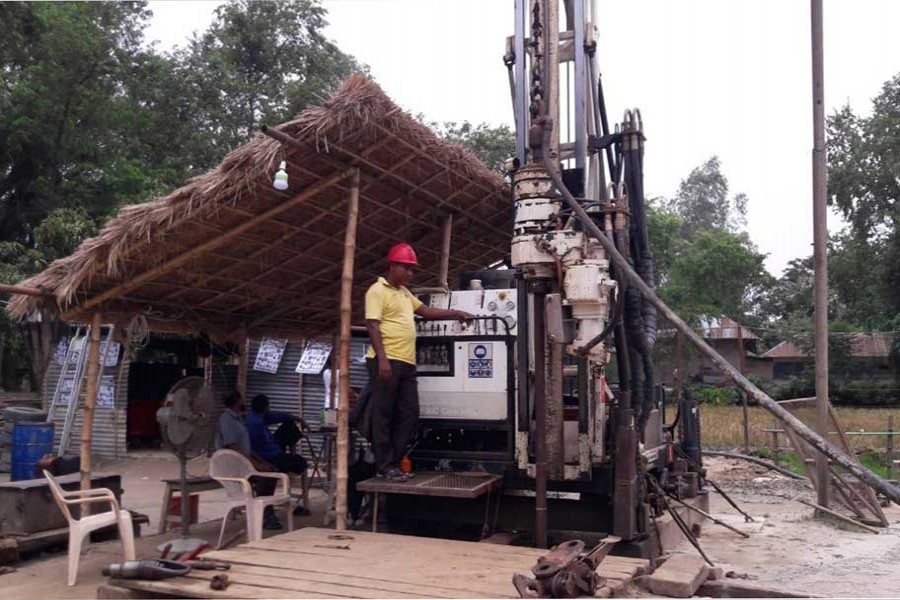Iron is used abundantly in the real estate, construction, various industries and other sectors of the economy. There is a growing demand for it.
Because of this reason and the lack of iron ores in the country, over the past few decades, Bangladesh has been forced to import larger volumes of iron in the form of sea-going old dilapidated ships.
These end-of-life ships are imported and then broken down at the ship-breaking yards to meet the demand of country's iron need. This is why the ship-breaking industry has flourished in Sitakunda area of Chattogram district. But there has been some concerns from environmental groups as such end-of-life ships pollute the environment in various ways.
Under these circumstances, the discovery of the first magnetite iron mine in Dinajpur of the country last month has been welcomed by the government, industries and other stakeholders of the economy.
The Geological Survey of Bangladesh (GSB) discovered the iron mine at Isabpur village in Hakimpur upazila of Dinajpur district. After drilling a well for over two months and following extensive examinations, the GSB made the ground-breaking announcement last month.
Back in 2013, the GSB had detected the existence of mineral substances while drilling a well at Murshidpur, about three kilometres east of Isabpur village. They began digging at Isabpur village on April 19 this year.
It is truly a matter of national pride and joy that we can now boast about having a good quality iron mine. The percentage of iron in the mine is 65, according to GSB. This is higher than mines found in other countries like Canada, China, Brazil, Sweden and Australia. The percentages of iron in the mines of those countries are usually below 50.
According to geological experts, the northern parts of Bangladesh including Dinajpur were under the sea, more than 600 million years back. As a result, in course of time, iron ores were formed in layers of formative rocks there. A 400-feet-thick layer of iron has been found in Isabpur village, almost 1,750 feet beneath the surface. It stretches over 6 to 10 square kilometres.
Moreover, during the discovery of the iron-ore mine, traces of other ores like gold, copper, nickel and chromium have also been found in the layer. Limestone was found at a depth of 1,150 feet. Reserves of coalmine, hard-rock and limestone have already been discovered in Dinajpur and other adjacent areas.
Such discoveries have renewed hopes of sustainable economic growth of the country as such natural resources can be used as raw materials in various sectors.
Experts are hopeful that the extraction of iron ore from the reserves will be economically viable. Good quality iron can help the sectors like construction, real estate, automotive etc. of the country as they have been largely dependent on iron derived from ship-breaking sector till now. This will also save money and time that was wasted in the import process of end-of-life ships.
Once initiated, such a mine project will also create plenty of jobs and ensure better financial conditions for people of the areas where these are located.
All credit for this discovery should go to the GSB team who worked hard and were patient during the entire digging process at the site. It should be noted that the GSB team has found the iron mine without help from any foreign experts and consultants.
This raises hope about the capability of the GSB. It also testifies the fact that with better support from the government, the GSB team can work on many similarly important projects in the near-future. The GSB should be encouraged by the concerned authorities through rewards and higher technological support.
Sarwar Md Saifullah Khaled is a retired Professor of Economics, BCS General Education Cadre.


